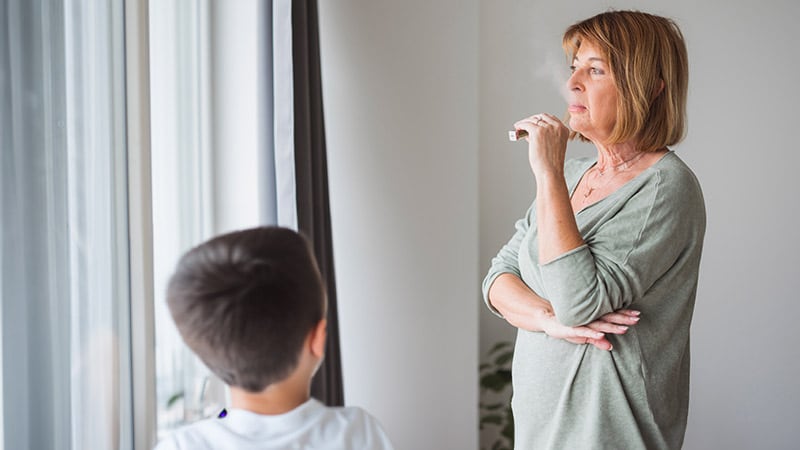Fitness
Reducing Kids’ Nicotine Exposure: Impact of Switching to Vaping

TOPLINE:
Children exposed to secondhand vapor from e-cigarettes absorb 84% less nicotine than those exposed to tobacco smoke from traditional cigarettes. However, nicotine absorption is still five times higher in children exposed to vapor than in those with no exposure.
METHODOLOGY:
- Researchers analyzed data from the US Continuous National Health and Nutrition Examination Survey collected between 2017 and 2020.
- A total of 1777 children aged 3-11 years were included, with serum cotinine levels
- Participants were categorized on the basis of reported exposure to secondhand smoke, secondhand vapor, or neither in the prior 7 days.
- Serum cotinine concentration (SCC) was measured as the primary outcome to quantify nicotine absorption.
TAKEAWAY:
- Nicotine absorption was highest among children exposed to secondhand cigarette smoke only, with a SCC of 0.494 μg/L (95% CI, 0.386-0.633 μg/L).
- Children exposed to secondhand vapor had an SCC of 0.081 pg/L (95% CI, 0.048-0.137 μg/L), 83.6% lower than those exposed to secondhand smoke (P
- Children with no reported secondhand exposure had the lowest SCC levels at 0.016 μg/L (95% CI, 0.013-0.021 μg/L), 96.7% lower than those with secondhand smoke exposure (P
- After covariate adjustment, the results remained consistent, indicating significantly lower nicotine absorption in children exposed to secondhand vapor than to secondhand smoke.
IN PRACTICE:
“These findings suggest that switching from smoking to vaping indoors may substantially reduce, but not eliminate, children’s secondhand exposure to nicotine and other noxious substances,” wrote the authors of the study.
SOURCE:
The study was led by Harry Tattan-Birch, PhD, from University College London in London, England, and published online on July 11 in JAMA Network Open. The study was funded by Cancer Research UK.
LIMITATIONS:
Questions about secondhand exposure were answered by a proxy respondent, usually a parent, who may have been hesitant to report exposure. Because the data were collected between 2017 and 2020, patterns of indoor use and vapor generation may differ for modern disposable vaping products. Questions about past 7-day secondhand exposure were asked at the initial interview, but blood samples were taken a few days later, which may affect the accuracy of exposure estimates. The sample size was insufficient to examine associations stratified by race and ethnicity, household income, or other important equity variables.
DISCLOSURES:
Various authors reported receiving grants from Pfizer, Johnson & Johnson, the National Centre for Smoking Cessation, among others.
This article was created using several editorial tools, including AI, as part of the process. Human editors reviewed this content before publication.










